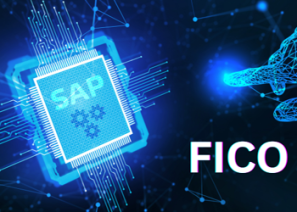Key Features of Training:
35 Hrs Instructor-led Training
Mock Interview Session
Project Work & Exercises
Flexible Schedule
24 x 7 Lifetime Support & Access
Certification and Job Assistance
Opentext Archive Center:
OpenText Archive Center is an enterprise-grade solution designed to securely manage, preserve, and access large volumes of digital content and documents. It provides organizations with a centralized repository for storing diverse types of data, including emails, documents, images, and multimedia files, while ensuring compliance with regulatory requirements and corporate governance standards. The Archive Center offers robust features for indexing, searching, and retrieving information efficiently, enhancing productivity and decision-making processes. With its scalability and flexibility, it caters to the needs of businesses across various industries, facilitating seamless information management and facilitating long-term preservation of critical assets.
Prerequisites: Who can attend Opentext Archive Center Training?
Basic understanding of information management concepts.
Familiarity with relevant technologies such as enterprise content management (ECM) systems or document management systems.
Proficiency in using relevant software tools or platforms.
Some courses might require specific technical skills or knowledge related to OpenText products or solutions.
Good Communication Skills.
Responsibilities of Opentext Archive Center Consultant:
Solution Design
Installation and Configuration
Data Migration
Integration
Customization and Development
Course Benefits
Job opportunities:
Promotion opportunities (Salary Hike):
Increased productivity:
Improved decision-making
Gain in-demand skills
What is future of SAP Opentext Archive Center Consultant?
Growing demand
Integration with SAP solutions
Regulatory compliance
Enhanced features and functionalities
Specialization opportunities
The fee for Opentext Archive Center training can vary depending on several factors such as the location, duration of the course, training format, and level of expertise. SAP offers various training options for Opentext Archive Center, including instructor-led courses, e-learning courses, and virtual live classrooms.
For More details you can Register Sign Up
Opentext Archive Center Certification FAQ's
What is OpenText Archive Center certification?
OpenText Archive Center certification is a program offered by OpenText to validate the skills and expertise of individuals in using and administering the Archive Center solution.
Why should I get certified in OpenText Archive Center?
Certification demonstrates your proficiency in working with OpenText Archive Center, making you a more attractive candidate to employers and clients. It can also enhance your career prospects and credibility within the industry.
What are the prerequisites for OpenText Archive Center certification?
Prerequisites may vary depending on the specific certification track. Generally, candidates are expected to have a certain level of experience or training in using OpenText Archive Center.
How do I prepare for OpenText Archive Center certification exams?
OpenText usually provides study materials, training courses, and practice exams to help candidates prepare for certification exams. Hands-on experience with the Archive Center solution is also valuable preparation.
Where can I take OpenText Archive Center certification exams?
OpenText certification exams are typically administered through authorized testing centers or online platforms. You can find information about exam locations and registration on the OpenText website.
How long is OpenText Archive Center certification valid?
Certification validity periods may vary depending on the specific certification track. It's essential to check the certification details provided by OpenText for information about validity periods and any requirements for maintaining certification.
What types of certifications are available for OpenText Archive Center?
OpenText offers various certification tracks for Archive Center, covering different roles and levels of expertise. These may include administrator certifications, developer certifications, or specialized certifications for particular features or functionalities.
Is recertification required for OpenText Archive Center certification?
Recertification requirements, if any, are typically outlined by OpenText for each certification track. It's essential to stay informed about any recertification requirements to ensure that your certification remains valid.
How can I verify someone's OpenText Archive Center certification?
OpenText provides tools or online verification systems where employers or clients can verify an individual's certification status. This helps ensure the authenticity of certified professionals.
Are there any continuing education requirements for OpenText Archive Center certification?
Continuing education requirements, if applicable, will be specified by OpenText for each certification track. These requirements may include completing additional training courses or earning continuing education credits to maintain certification status.
Opentext Archive Center Certification:
OpenText offers certification programs for various products and solutions, including OpenText Archive Center. However, specific details about the certification program, such as prerequisites, exam formats, and availability, may change over time. For the most accurate and up-to-date information on OpenText Archive Center certification, I recommend visiting the official OpenText website or contacting OpenText directly through their certification program support channels. They will provide you with the latest information on certification tracks, exam processes, study materials, and any other relevant details related to becoming certified in OpenText Archive Center.
Opentext Archive Center Curriculum:
Introduction to Content Server v16.2
Introduction to content server architecture
Introduction to classic and smart UI
Navigate throughout content server
Add documents/folders to content server
Working with versions of documents
Drag and Drop functionality overview with classic UI
Working with folder permissions
Content Server Administration
Difference between role of the system and business administrator
Introduction and working with administration Pages
Difference between administration pages and admin user privilege
Creation of content server local user and groups
Understanding the usage of different privileges
OTDS administration and internal OTDS
OTDS – administrating synchronized users and groups
Content server licensing
Cluster management
Install directory information
Search and Module Administration
Creation of index and search partitions
Configuration of search index
Administer data flow processes in search administration
Set up control rules on data flow processes
Installing, upgrading and uninstalling of custom modules
Logging, Live Reports and Database Tables Overview
Log setting in content server
Understanding different logs in content server to troubleshoot issues
Creation of livereport
Database tables information
Sample queries to create live report and to query DB for more
Information
Archive Center v16.2 Overview
Introduction to administration center
Creating archives and IPools
Overview on different storage devices supported
Creating disk buffers
Creating volumes and assigning volumes to IPools
Configuration of SAP and other supported systems
Accepting and enabling certificate from SAP and other system
Administration of Archive Center
Introduction to mechanism on, how data stored in archive server?
systems function
Alerts configuration jobs utilities
Configuration function (Archive and logs configuration)
Archive Center v16.2 Overview
Introduction to administration center
Creating archives and IPools
Overview on different storage devices supported
Creating disk buffers
Creating volumes and assigning volumes to IPools
Configuration of SAP and other supported systems
Accepting and enabling certificate from SAP and other system
Administration of Archive Center
Introduction to mechanism on, how data stored in archive server?
systems function
Alerts configuration jobs utilities
Configuration function (Archive and logs configuration)
Command line utilities and Database tables overview
Dsclient connection and utilities. dinfo, volinfo etc usage
Overview and understanding of DB tables
Querying DB different tables for storage location.
Troubleshooting and Log reading and understanding
To find docidstr from storage location
Querying database to identify missing data and different database
tables overview. Understanding usage of different logs and understanding of logs
Note: The specific curriculum for Opentext Archive Center training may vary depending on the needs of the trainees/Corporate Client and the objectives of the training program.
Opentext Archive Center Interview Questions and Answers:
What is OpenText Archive Center, and what are its primary functionalities?
OpenText Archive Center is an enterprise content management solution designed to securely store, manage, and retrieve large volumes of documents, records, and digital assets. Its primary functionalities include document archiving, retrieval, retention management, and compliance.
Can you explain the architecture of OpenText Archive Center?
The architecture typically includes components such as storage repositories, indexing services, retrieval services, user interfaces, and integration modules with other systems.
What are the key benefits of using OpenText Archive Center?
Benefits include improved document management, enhanced compliance with regulatory requirements, reduced storage costs, increased efficiency in accessing information, and better control over document lifecycle.
How does OpenText Archive Center ensure document security?
It provides features such as access controls, encryption, audit trails, and authentication mechanisms to ensure the security and integrity of stored documents.
What are the different deployment options available for OpenText Archive Center?
OpenText Archive Center can be deployed on-premises, in the cloud, or in hybrid environments, providing flexibility to organizations based on their requirements and preferences.
Can you discuss the process of integrating OpenText Archive Center with other enterprise systems?
Integration typically involves using APIs, connectors, or middleware to connect OpenText Archive Center with various systems such as ERP, CRM, or document management systems.
How does OpenText Archive Center support regulatory compliance?
It offers features for defining retention policies, managing records according to legal and regulatory requirements, and generating audit trails to demonstrate compliance.
What are some common challenges faced when implementing OpenText Archive Center, and how can they be addressed?
Challenges may include data migration, user adoption, integration complexities, and ensuring alignment with organizational goals. Addressing these challenges requires careful planning, stakeholder engagement, and effective change management strategies.
What role does metadata play in OpenText Archive Center, and why is it important?
Metadata is used to describe and classify documents, making them easier to search, retrieve, and manage. It's important for organizing content, enforcing policies, and ensuring accurate indexing.
How does OpenText Archive Center handle high availability and disaster recovery?
It typically employs replication, clustering, and backup strategies to ensure continuous availability of archived content and facilitate rapid recovery in case of disasters.
Can you describe the process of searching for and retrieving documents in OpenText Archive Center?
Users can search for documents using metadata, full-text search, or predefined queries through the user interface. Once located, documents can be retrieved for viewing or further processing.
What are some best practices for designing and implementing retention policies in OpenText Archive Center?
Best practices include understanding regulatory requirements, involving stakeholders in policy definition, regularly reviewing and updating policies, and ensuring consistency and transparency in enforcement.
How does OpenText Archive Center handle versioning and document lifecycle management?
It supports version control, enabling users to track changes and access previous versions of documents. Additionally, it provides features for defining lifecycle stages, such as creation, review, approval, and disposition.
What tools and utilities are available for administering OpenText Archive Center?
Administering tools may include management consoles, command-line interfaces, and web-based administration portals for configuring settings, monitoring performance, and managing users and permissions.
How does OpenText Archive Center facilitate collaboration and workflow automation?
It offers features for sharing documents, assigning tasks, and defining workflows to streamline business processes, improve collaboration, and ensure accountability.
What are some common strategies for optimizing the performance of OpenText Archive Center?
Strategies may include optimizing storage configurations, tuning indexing and retrieval services, implementing caching mechanisms, and periodically archiving or purging inactive data.
Can you discuss the role of OpenText Archive Center in supporting digital transformation initiatives?
OpenText Archive Center plays a critical role in digitizing and managing documents, enabling organizations to transition from paper-based to digital workflows, improve operational efficiency, and enhance customer experiences.
How does OpenText Archive Center handle different types of content, such as structured and unstructured data?
It provides support for a wide range of content types, including documents, emails, images, videos, and audio files, allowing organizations to manage diverse sets of information within a unified platform.
What are the key considerations for scaling OpenText Archive Center to accommodate growing data volumes?
Considerations may include scalability of storage infrastructure, performance tuning, load balancing, and capacity planning to ensure optimal performance and reliability as data volumes increase.
How does OpenText Archive Center support data governance initiatives within organizations?
It enables organizations to establish policies, procedures, and controls for managing and protecting data assets, ensuring compliance with internal policies and external regulations, and mitigating risks associated with data misuse or loss.
Participants will have 24/7 access to our online lab, providing hands-on experience with Opentext Archive Center tools and scenarios.
This includes server access to S/4 HANA 2023 for 1 year, ensuring you have ample time to practice and apply your skills in a real-world environment.
With this extended access, you can work on projects, explore advanced features, and solidify your understanding of Opentext Archive Center in the latest SAP S/4 HANA version.



